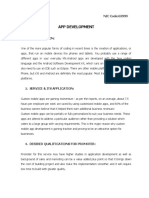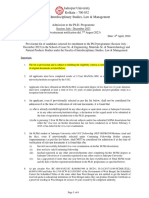0% found this document useful (0 votes)
311 views7 pagesSOLID Principles With JAVA
The document provides a practical guide to mastering the SOLID principles in Java, detailing each principle with definitions, examples, and explanations of their importance. It covers the Single Responsibility Principle, Open/Closed Principle, Liskov Substitution Principle, Interface Segregation Principle, and Dependency Inversion Principle. Each principle is illustrated with code examples that demonstrate both incorrect and correct implementations.
Uploaded by
Sanjay PatilCopyright
© © All Rights Reserved
We take content rights seriously. If you suspect this is your content, claim it here.
Available Formats
Download as PDF, TXT or read online on Scribd
0% found this document useful (0 votes)
311 views7 pagesSOLID Principles With JAVA
The document provides a practical guide to mastering the SOLID principles in Java, detailing each principle with definitions, examples, and explanations of their importance. It covers the Single Responsibility Principle, Open/Closed Principle, Liskov Substitution Principle, Interface Segregation Principle, and Dependency Inversion Principle. Each principle is illustrated with code examples that demonstrate both incorrect and correct implementations.
Uploaded by
Sanjay PatilCopyright
© © All Rights Reserved
We take content rights seriously. If you suspect this is your content, claim it here.
Available Formats
Download as PDF, TXT or read online on Scribd
/ 7
























































































